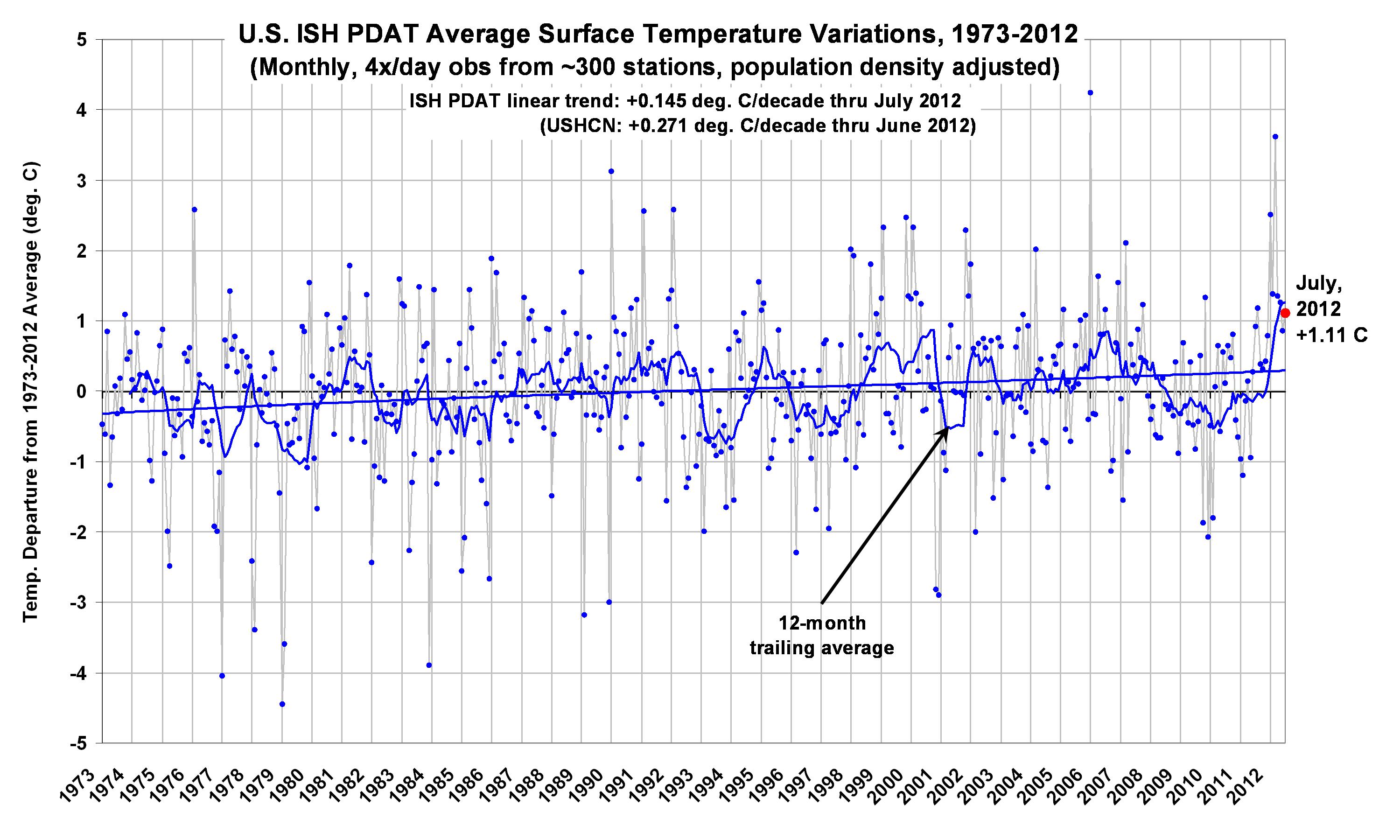The U.S. lower-48 surface temperature anomaly from my population density-adjusted (PDAT) dataset was 1.11 deg. C above the 1973-2012 average for July 2012, with a 1973-2012 linear warming trend of +0.145 deg. C/decade (click for full-size version):

I could not compute the corresponding USHCN anomaly this month because it appears the last 4 years of data in the file is missing (ftp://ftp.ncdc.noaa.gov/pub/data/ushcn/v2/monthly/9641C_201208_F52.avg.gz). Someone please correct me if I am mistaken.
Note that the 12-month period ending in July 2012 is also the warmest 12-month period in the 40 year record. I cannot compare these statistics to the (possibly warmer) 1930s because for the most part only max and min temperatures were reported back then, and my analysis depends upon 4x/day observations at a specific synoptic reporting times.
There is also no guarantee that my method for UHI adjustment since 1973 has done a sufficient job of removing UHI effects. A short description of the final procedure I settled on for population density adjustment of the surface temperatures can be found here.

 Home/Blog
Home/Blog




The globally-averaged land surface temperature for November 2012 was the sixth warmest November on record, at 1.13C (2.03F) above average.
We’re now really facing climate change worldwide. https://www.barrettfinancial.com/
This is awesome content you shared.
So many great and useful tips! I dont even know where to start! Thanks anyway.
these are all just more reasons to make the switch to renewable energy production like solar, wind, etc. We help educate people on this all the time. Hoping more people catch on in order to help improve our environment.
-Laura, https://www.solarpanelswinnipeg.com/
I just started learning about temperature cycles and behaviour. It’s fascinating to see how it changes over time and theorize on what may play a vital role in it’s evolution. -Mark, https://www.winnipegasbestosandmoldexperts.com/
Great info! Thank you.
Interesting take on current cycles and behaviour of temperatures. https://www.mississaugakitchenandbathrenovations.com/
That’s an interesting note. It’s certainly possible that the 1930s were warmer than the 12-month period ending in July 2012, but it’s difficult to say for sure without more complete data. The lack of 4x/day observations from the 1930s makes it difficult to compare temperatures directly to the more recent data.